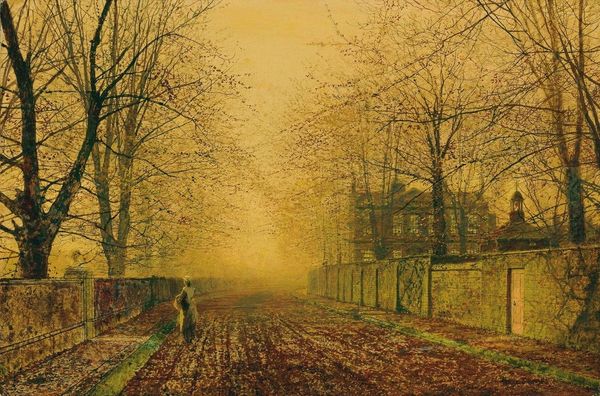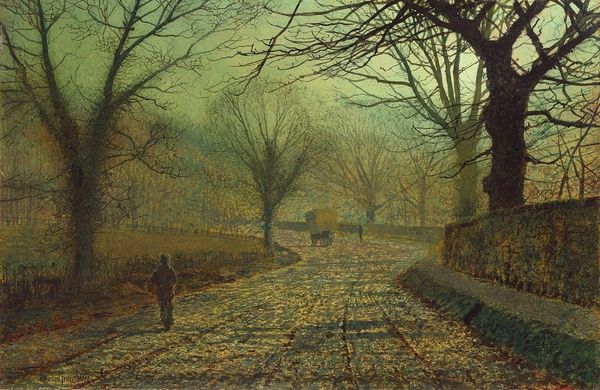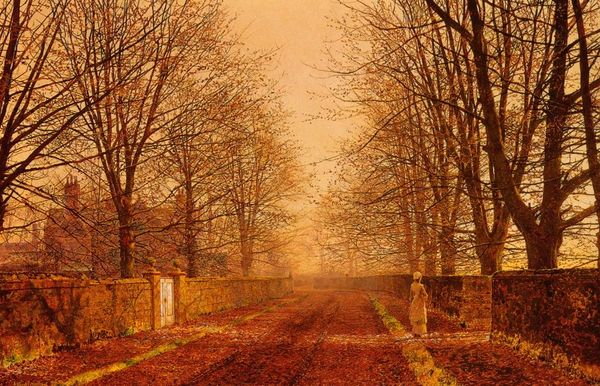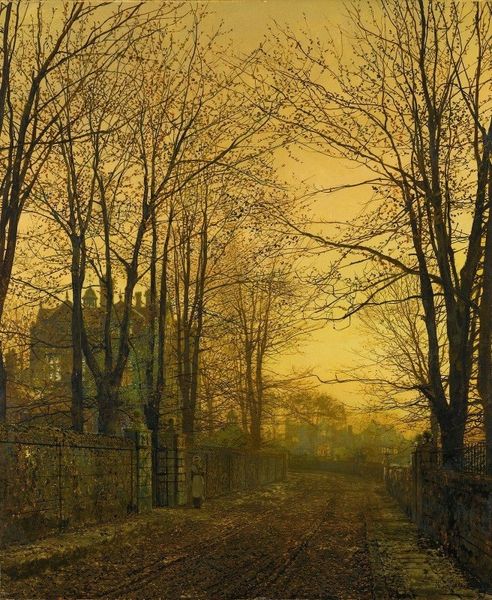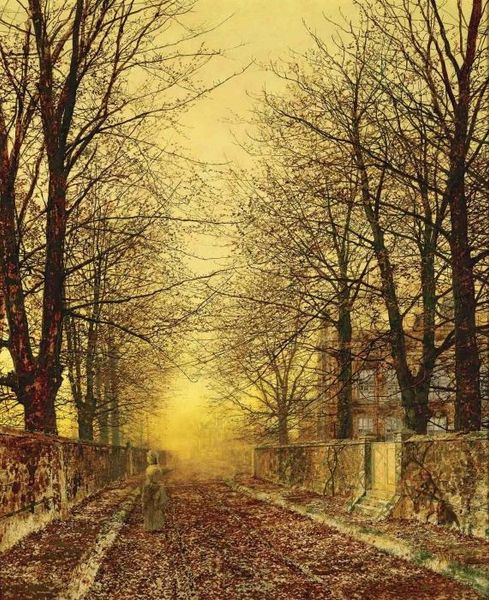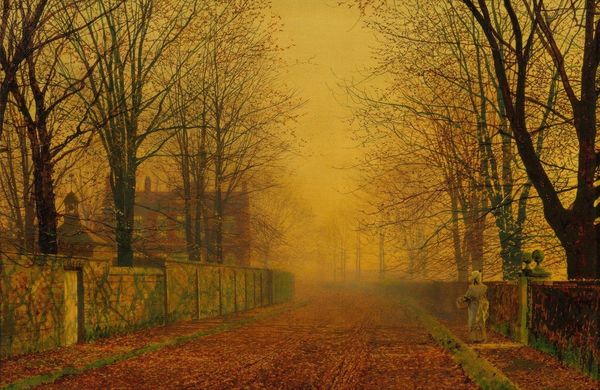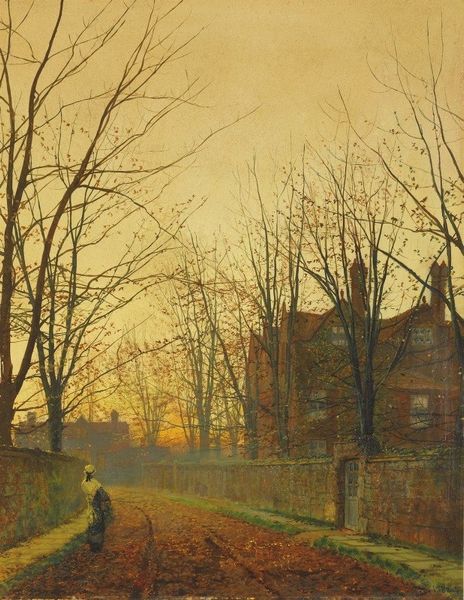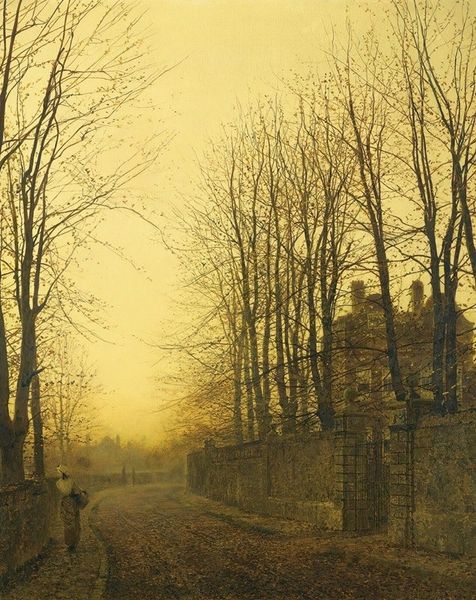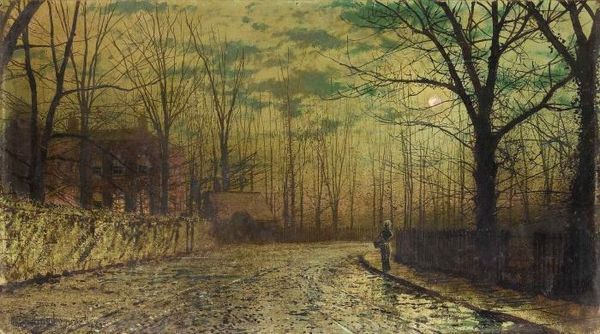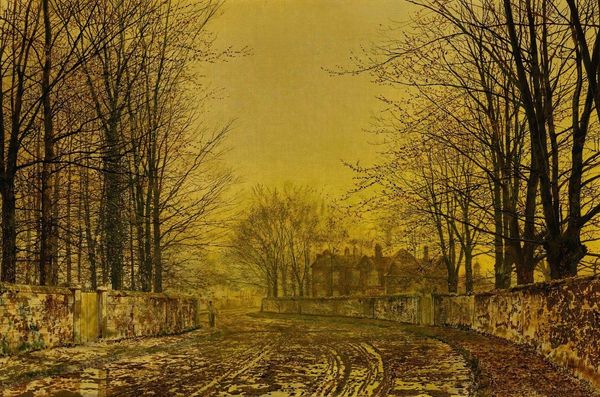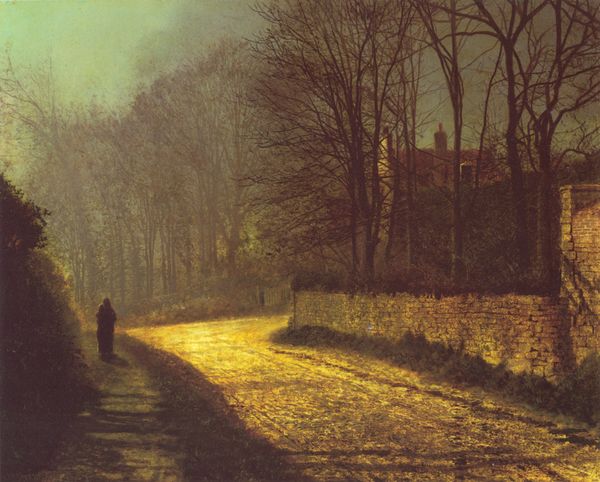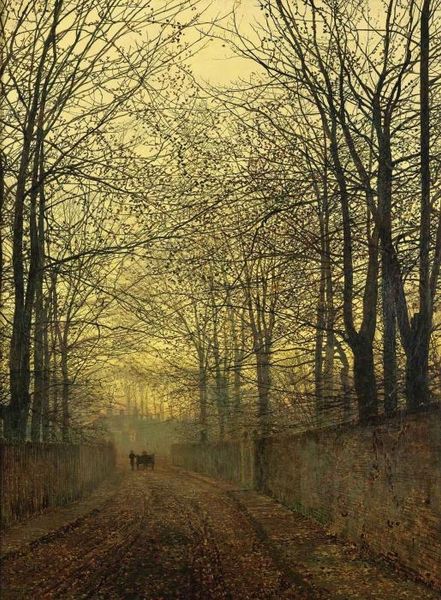
painting, plein-air, oil-paint
#
portrait
#
narrative-art
#
painting
#
plein-air
#
oil-paint
#
landscape
#
nature
#
romanticism
#
fog
#
cityscape
#
genre-painting
#
nature
#
realism
Dimensions: 122 x 81.3 cm
Copyright: Public domain
Curator: The artwork before us, entitled "Sixty Years Ago," is a painting attributed to John Atkinson Grimshaw. Immediately, one notices the pervasive sense of stillness. The palette, dominated by muted browns and grays, evokes a melancholy mood. Editor: Indeed, a contemplative and introspective feeling permeates the scene. One is struck by the scale—or rather the interplay of scales— between the solitary figure and the towering trees on the composition’s right edge. How do these elements converge, and what visual language connects Grimshaw to the politics and power structures defining Victorian England? Curator: That’s a marvelous inquiry. Note how Grimshaw arranges a series of vertical forms with impressive formal restraint. The repeated vertical lines in both foreground and middle ground converge to draw the eye back to the subtle gradations of light visible behind the main architectural forms, pushing the atmospheric effects towards an idealized rendition. Editor: But surely this aesthetic idealism disguises, rather than transcends, grim social realities? One could interpret the city, rendered at dusk, as a space haunted by its industrial past. Is it romanticizing urban life or subtly commenting on it, even critiquing its social hierarchies? Note how the puddles obscure clear passage! This detail can represent, perhaps, how social movement in industrializing cities like Leeds, Grimshaw's home, was not entirely smooth for all its denizens. Curator: Such observations, while certainly relevant to our understanding, cannot erase the painter’s careful considerations concerning space, massing, and color theory! And observe how the single figure presents a formal counterpoint against the grid like city architecture—an analog representing, potentially, the humanistic individual against cold machine logic. The artist uses a muted, monochrome to maintain unity, though hints of pink are cleverly deployed. Editor: However, without situating Grimshaw within his socio-political context, aren't we at risk of depoliticizing him entirely? To gaze solely at these colors and lines feels a bit removed from grappling with the hard questions the scene subtly prompts about England during the period, as an artistic exploration of gendered identities and the industrial city during the 19th Century. Curator: Of course, situating art historically matters. And in that setting, such a composition may exemplify a Romantic painter’s interest in finding sublime beauty amid industry, one deeply attuned to contrasts in line, light, and color. Editor: So here we stand, with the social matrixes that shaped a painter whose commitment to this vision made him uniquely representative of a particular industrial milieu.
Comments
No comments
Be the first to comment and join the conversation on the ultimate creative platform.
